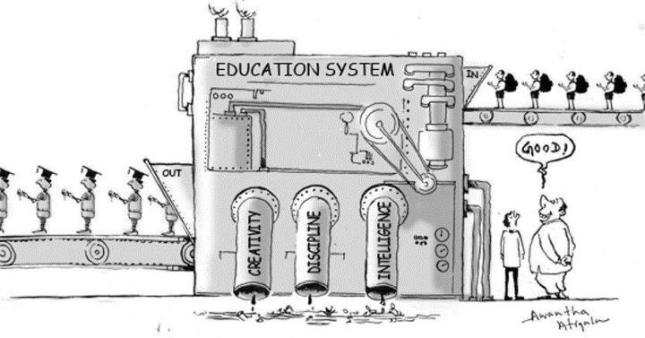 As a gifted educator, who traveled between schools, I found most teachers wanted to be more creative in their teaching. Some of us were fortunate to have a principal who encouraged us to be creative, take risks and try something new. However, this is not always the case.
As a gifted educator, who traveled between schools, I found most teachers wanted to be more creative in their teaching. Some of us were fortunate to have a principal who encouraged us to be creative, take risks and try something new. However, this is not always the case.
In an article titled, Explaining the Decline of Creativity in American Children, Dr.Kyung Hee Kim addresses questions from her findings which show creativity scores are falling in the US . One of the several reasons she lists is No Child Left Behind and the focus on standardized tests. It is this point I’d like to address.
Dr. Kim states, “An elephant in the room is the No Child Left Behind Act (NCLB), which requires all states to administer annual assessments in reading/language arts and mathematics in Grades 3 through 8. Teaching to this test discourages purposeful creativity development and stifles children’s creativity in schools. Standardized testing forces emphasis on rote learning instead of critical, creative thinking, and diminishes students’ natural curiosity and joy for learning in its own right.
Further, NCLB may stifle teachers’ creativity because the high pressure to cover the content required to produce passing test scores overrides the desire (and time) to stimulate children’s imagination and curiosity. NCLB does not value teachers’ skills that could encourage the creative application of classroom learning to real life situations. Teaching professionals are reduced to teaching technicians with less ability to develop creative approaches to engage students because they are required to cover what is on the tests.”
Teachers are very focused on making sure students are prepped and have an understanding of the state test. Part of the test many students struggle with is the writing portion, so teachers work with the students to make sure they understand the need to be very clear and descriptive in their writing. Here is an example of how this affected one child:
One eight year-old girl, who had been coached at length for the upcoming state test, was a child also being tested for the gifted program. I was asked to give her the Torrance Test of Creativity, in order to see if she qualified for the gifted program. As part of the test, I asked her to draw a creative picture but rather, she insisted on filling the page with writing. When I questioned her work she explained she wanted to do it “right” and knew she had to write a lot to be “right”.
In another example, a teacher asked to speak with me one day after class about a student we shared. I was the child’s gifted teacher and she was the regular classroom teacher. The teacher explained that she was having problems with Jane in class. She had assigned the students a book report to complete with specific instructions which stated they were to read their book report in front of the class. Jane showed up that day, in costume and with props ready to present her book report.
The teacher went on to explain to me how she had spoken to Jane about the fact she had not followed directions and how this caused trouble because the other students would now want to do something similar. Couldn’t Jane see why it was important to follow directions so everyone was doing the same thing? The teacher saw Jane as a trouble maker while I saw Jane as a creative child and as someone who was raising the bar for the other students.
Many teachers are themselves quite creative and at the very least would like an opportunity to be more innovative in their teaching. However, the trickle down effect of high-stakes testing stifles the administration and the teachers they support.
Dr. Kim so wisely pointed out at the end of her article how ” China, Japan, Korea, and Taiwan have modeled their educational systems after the earlier American education system because of America’s previous success in encouraging creativity in children. Ironically, in the U.S., NCLB now mandates standardized testing and national educational standards, fosters rote memorization, and chokes creativity in children.”
Creative thinking is not a priority in many homes and schools, yet creativity is becoming increasingly important as we look for new ways to solve problems in our world.



